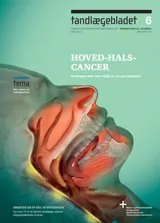Neoplasier i næse og bihuler
Neoplasier, abnorm ny cellevækst i næse og bihuler er sjældent forekommende. Der findes flere histologiske typer, hvoraf de hyppigste benigne tumorer er osteomer og sinonasale papillomer, og de hyppigste maligne tumorer er planocellulære karcinomer og adenokarcinomer. Symptomerne initialt er ofte banale såsom nasalstenose, næseflåd og/eller trykken, hvorfor de ofte negligeres. Dette medfører, at sygdommen på diagnosetidspunktet ofte er fremadskreden. Behandlingen er derfor udfordrende tillige grundet den nære relation til hjerne og øjne og er ofte multidisciplinær. Nyere behandlingsmetoder i form af funktionel endoskopisk sinuskirurgi (FESS-functional endoscopic sinus surgery) med computervejledning (CAS – computer assisted surgery) erstatter i stigende grad tidligere eksterne adgange.
Neoplasia in the nose and paranasal sinuses
Neoplasia, abnormal proliferation of cells, in the nose and paranasal sinuses is rare. There are several histological types, the most frequent benign tumours being osteomas and sinonasal papillomas and the most frequent malignant tumours being squamous cell carcinomas and adenocarcinomas. The initial symptoms are often vague, i.e. nasal blockage, nasal discharge and/or facial pressure, and are often neglected by the patient. Thus, the tumour is often presented at a late stage. Treatment is challenging because of the close relation to the brain and eyes and is often multidisciplinary. Newer treatment modalities such as functional endoscopic sinus surgery (FESS – Functional Endoscopic Sinus Surgery) with computer guidance (CAS – computer assisted surgery) are increasingly replacing former external approaches.


